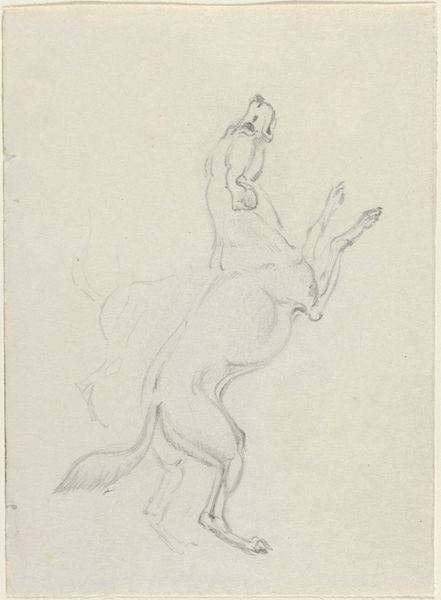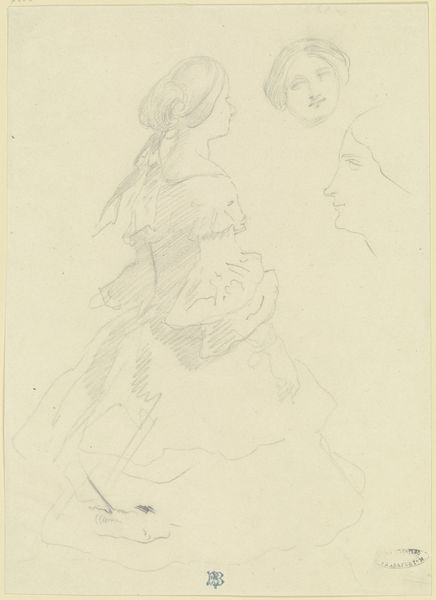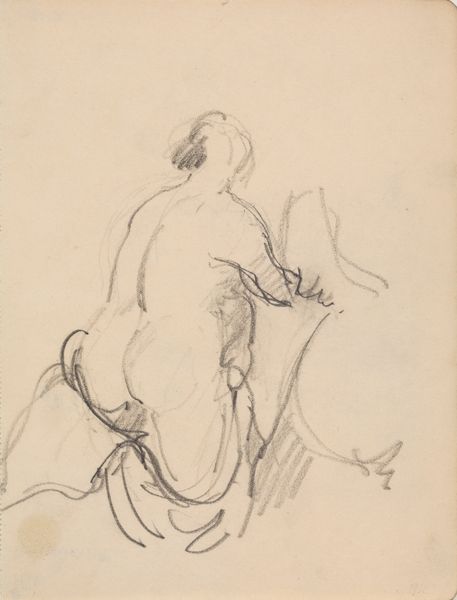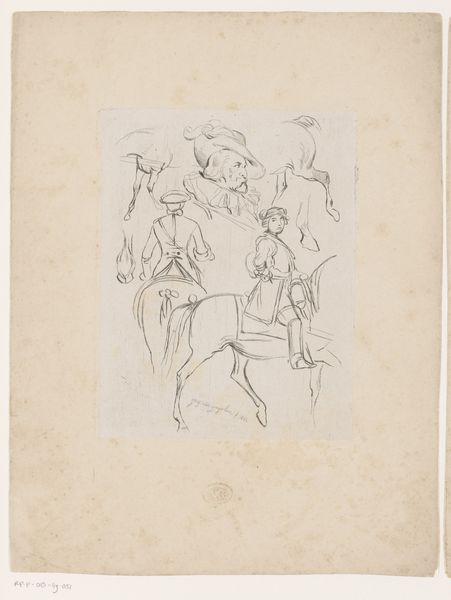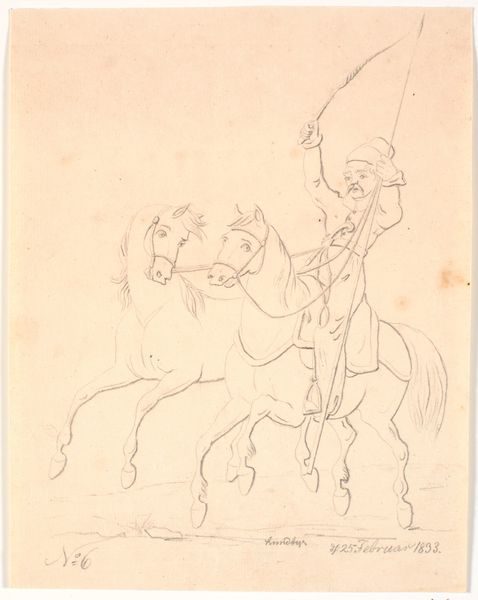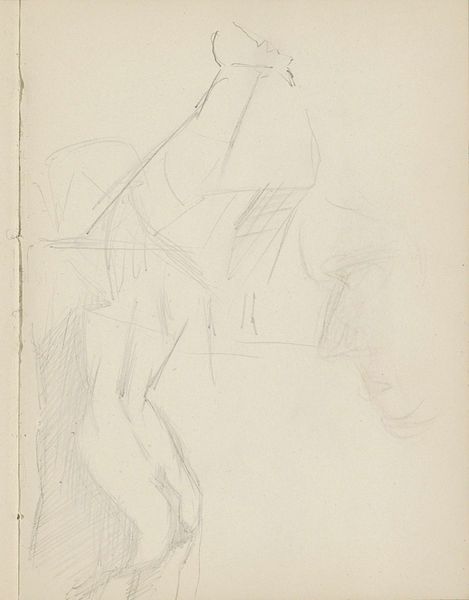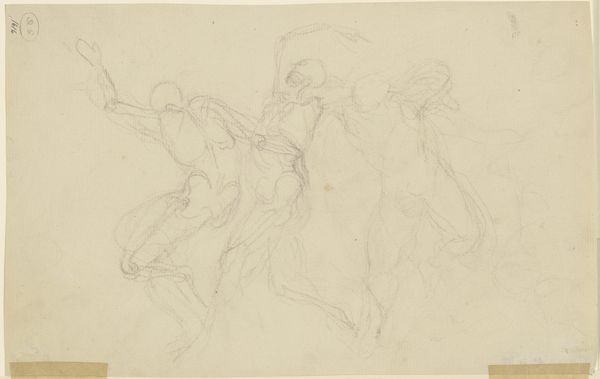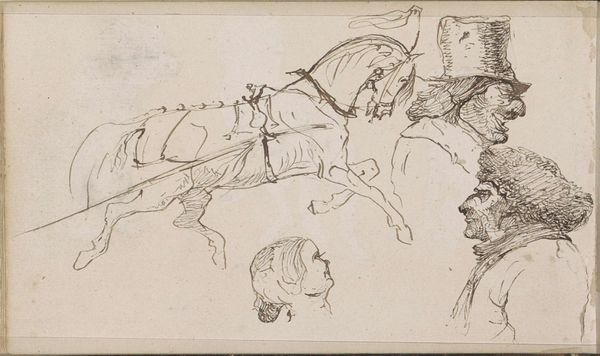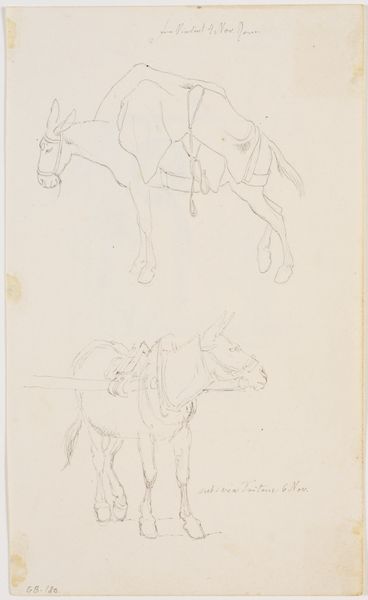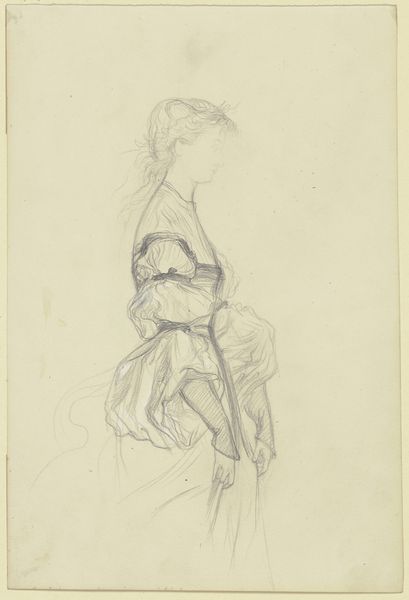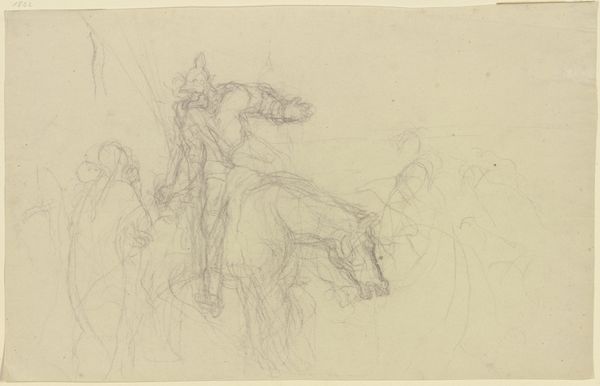
Dimensions: height 273 mm, width 420 mm
Copyright: Rijks Museum: Open Domain
Curator: Here we have "Studies van de Dood te paard", translated as "Studies of Death on Horseback," created by Carel Vosmaer sometime between 1836 and 1888. It's a compelling pencil drawing. Editor: It certainly is… striking. My initial impression is that it feels ghostly, incomplete. The lines are so light and airy, as if the figures are fading away right before our eyes. Curator: It is, in essence, a series of studies, offering insight into the artist's process, and indeed it gives one the sensation of the ephemeral. Vosmaer was not only an artist but also a prominent literary figure and critic in the Netherlands. How might his writing and social critique inform his artistic depictions of death? Editor: That's fascinating. From a purely formal perspective, the repetition of the figure on horseback creates a rhythm across the page, almost like a macabre dance. Notice how the weight and intensity of the pencil strokes vary, suggesting movement and depth despite the overall lightness. It's like he is experimenting. Curator: Precisely. Vosmaer was deeply engaged with the social and political issues of his time. His writings reveal a concern with mortality, especially as it pertains to power and societal structures. The image of death on horseback is a potent symbol of power and inevitability but rendered here with a delicate touch, suggesting a critique of that very power. The historical and cultural implications are profound. Editor: I see your point. Yet, even divorced from that socio-political context, there's a primal quality to the skeletal rider. The lack of detail forces the viewer to fill in the gaps, creating a personal connection with the image of mortality. That initial sketch at the top looms over the others. Curator: I find that contrast particularly interesting given the time period. Museums and galleries were then becoming increasingly important venues for shaping public opinion through visual media, but drawings like this were usually for private consumption, revealing the artist's inner thoughts away from the political concerns and public image. Editor: A very insightful point. Curator: Understanding its cultural context and appreciating its form gives us a window into both its moment and our own. Editor: Indeed. Looking closer at the pencil strokes has revealed unexpected layers of depth, especially the tension between what’s been filled in versus sketched.
Comments
No comments
Be the first to comment and join the conversation on the ultimate creative platform.
